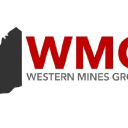Nickel: EV Boom & Ethical Sourcing Boost Investment Appeal

Nickel offers strong investment potential due to robust demand from stainless steel and EVs, potential supply constraints, and growing focus on ethical production.
- Nickel prices have dipped to around $17,300 per tonne, but forecasts suggest a rebound to $20,000 by year-end.
- Demand for nickel remains robust, with Chinese stainless steel production up 15% year-to-date.
- Indonesia is considering limiting new NPI smelter construction and potentially revoking some permits.
- Electric vehicle sales continue to grow globally, driving demand for nickel in batteries.
- Ethical concerns about Indonesian nickel production may benefit Western producers.
The Case for Investing in Nickel
Nickel, a versatile metal crucial for both traditional industries and emerging technologies, presents a compelling investment opportunity in the current market landscape. Despite recent price fluctuations, the underlying fundamentals of the nickel market remain strong, driven by robust demand from the stainless steel sector and the rapidly growing electric vehicle (EV) industry. This article examines the key factors shaping the nickel market and why investors should consider adding this strategic metal to their portfolios.
Current Market Dynamics
The nickel market has experienced some volatility recently, with prices dipping below the $19,000 per tonne mark. Mark Selby, CEO of Canada Nickel, notes that prices have reached around $17,300 per tonne, or just under $8 per pound. However, this current price level should be viewed in the context of broader market trends. Selby points out that despite the recent dip, nickel prices are still up 15% from the lows seen earlier in the year.
This price movement can be attributed to several factors, including seasonal selling patterns and a slight cooling in the broader base metals market. As Selby explains, "It's seasonal: 'sell in May, go away'. That's taken a little bit of steam out of all of the base metals." However, investors must look beyond short-term fluctuations and focus on the longer-term outlook.
Forecasts & Market Outlook
Industry experts remain optimistic about nickel's prospects despite the recent price weakness. Selby maintains his forecast from the start of the year, predicting that nickel prices will rebound to $20,000 per tonne by the end of the year. This outlook is underpinned by strong fundamentals in both supply and demand. On the demand side, nickel consumption has been robust. Selby notes that demand is up 9% through the year's first quarter. This growth is primarily driven by the stainless steel sector, particularly in China, where stainless steel production is up 15% year-to-date for 300 series stainless steel with a high nickel content.
Supply Considerations: The Indonesian Factor
Indonesia, the world's largest nickel producer, is crucial in shaping the global market. Recent developments in the country could have significant implications for nickel supply and, consequently, prices.
Selby reports on discussions from a recent Indonesian nickel conference, highlighting two key points:
- Grade Preservation: There are concerns about Indonesia's depletion of high-grade nickel resources. While Selby believes the decline may not be as severe as some projections suggest, he emphasizes that many analysts are not adequately accounting for the gradual decrease in average grades over time.
- Production Limits: Indonesian officials are considering limiting the construction of new Nickel Pig Iron (NPI) smelters and may even revoke some existing permits. This move could constrain Indonesia's nickel supply growth in the coming years.
These developments align with Indonesia's strategy to manage its nickel resources more carefully. Selby describes Indonesia as "the OPEC of nickel," suggesting that the country may be willing to manage supply to support higher prices. This approach could benefit nickel investors by creating a more balanced market.
Demand Drivers: Stainless Steel & Electric Vehicles
The bullish case for nickel is primarily built on strong demand fundamentals from two key sectors: stainless steel and electric vehicles.
Stainless Steel: A Persistent Growth Story. Stainless steel production, particularly in China, continues to be a major driver of nickel demand. Selby reports that Chinese stainless steel production is up 15% year-over-year through May. This growth is not a short-term anomaly but part of a long-term trend.
Selby critiques some analyst forecasts that project stainless steel production growth will slow to 2-3% by 2027-2028. He argues that this projection significantly underestimates the historical trend and the inherent advantages of stainless steel as a material. "Stainless steel is a high strength, long life, highly recyclable material,"
Selby explains. "If anything, it's gaining market share for a very long time, and we don't see that slowing down anytime soon."
Electric Vehicles: The rapid growth of the electric vehicle industry represents a significant new source of nickel demand. Despite some concerns about a slowdown in EV sales, the data remains encouraging. Selby reports that overall plug-in vehicle sales were up 30% year-over-year, with battery electric vehicles up 14% and plug-in hybrids up 50%.
These growth rates exceed many analyst forecasts, suggesting that EVs' impact on nickel demand may be underestimated. The shift towards nickel-rich battery chemistries in many EV models further amplifies this demand.
Ethical Considerations: The "Blood Nickel" Dilemma
A recent Bloomberg article has brought attention to ethical concerns surrounding nickel production in Indonesia. The article dubs it "blood nickel" in reference to similar controversies in the diamond and cobalt industries. It highlights poor working conditions, environmental degradation, and health impacts on local communities associated with some Indonesian nickel operations.
This increased scrutiny could have significant implications for the nickel market.
As Selby points out, "Young, environmentally conscious consumers who you want to sell electric vehicles to will be paying attention and will start asking questions about where their nickel comes from."
This situation could benefit Western nickel producers who operate under stricter environmental and labor standards. Investors should consider the growing importance of ESG (Environmental, Social, and Governance) factors in the mining industry and how they might influence future supply dynamics and company valuations.
Emerging Nickel Projects: Opportunities for Investors
The transcript highlights several nickel projects that investors might find interesting:
- Magna Mining: Advancing exploration in the Sudbury Basin, a renowned nickel mining district.
- EV Nickel: Reporting promising surface samples from their Carlay deposit.
- Western Mines Group: Potentially discovering high-grade zones at their Mulga Tank deposit.
- Lunnon Metals: Announcing a new resource at their Baker deposit near the historic Kambalda nickel mining complex.
- Canada Nickel: Delivering a Feasibility Study on Crawford, one of several global scale assets in its portfolio.
These projects represent potential investment opportunities in the nickel space, particularly for those interested in junior mining companies with exploration upside.
Financing Activity: A Positive Signal
Recent financing activities in the nickel sector provide another positive signal for investors. Power Nickel and Premium Nickel Resources have successfully raised significant funds ($20 million and $27 million, respectively) to advance their projects. This influx of capital suggests that institutional investors see value in the nickel sector, despite short-term price volatility.
The nickel market presents a compelling investment case based on strong demand fundamentals, potential supply constraints, and its critical role in the global transition to clean energy. While short-term price volatility may persist, the long-term outlook for nickel remains positive. Investors should consider the following factors when evaluating nickel investments:
- The continued growth in stainless steel production, particularly in China.
- The accelerating adoption of electric vehicles and the increasing nickel content in EV batteries.
- Potential supply constraints from Indonesia, the world's largest nickel producer.
- The growing importance of ethical and sustainable nickel production.
- Opportunities in both established nickel producers and junior exploration companies.
As with any commodity investment, thorough due diligence and an understanding of market dynamics are essential. However, nickel offers an intriguing opportunity for investors seeking exposure to a metal with both traditional industrial applications and a key role in future technologies.
The Investment Thesis for Nickel
- Strong demand growth: Stainless steel production continues to expand, and EV battery demand is accelerating.
- Supply constraints: Potential limits on Indonesian production could tighten the market.
- Price recovery potential: Current prices are below forecast levels, suggesting upside potential.
- ESG considerations: Growing scrutiny of "blood nickel" could benefit Western producers.
- Exploration upside: Junior miners offer exposure to potential new discoveries.
- Strategic importance: Nickel's role in clean energy technologies provides long-term demand support.
- Diversification: Nickel offers portfolio diversification within the metals and mining sector.
Actionable Advice
- Consider established nickel producers with strong ESG credentials.
- Explore junior miners with promising projects in stable jurisdictions.
- Monitor Indonesian policy developments for potential market impacts.
- Stay informed about EV sales trends and battery technology advancements.
- Evaluate companies' exposure to traditional (stainless steel) and emerging (EV) markets.
The nickel market is at a critical juncture, balancing traditional demand drivers with emerging technologies and increasing ethical considerations. The concept of "Blood Nickel" refers to nickel produced under poor environmental and labor conditions, primarily in Indonesia. This echoes similar controversies surrounding "Blood Diamonds" from conflict zones in Africa and "Blood Cobalt" mined under exploitative conditions in the Democratic Republic of Congo. The emergence of this issue in the nickel sector underscores the growing importance of responsible sourcing in the battery supply chain. As consumers and investors become more conscious of these issues, companies that can demonstrate ethical and sustainable nickel production may gain a competitive advantage. This shift could reshape global nickel supply chains and influence investment decisions in the sector. Investors should closely monitor these developments, as they may significantly impact the future landscape of nickel production and pricing.
Analyst's Notes




Subscribe to Our Channel
Stay Informed
































